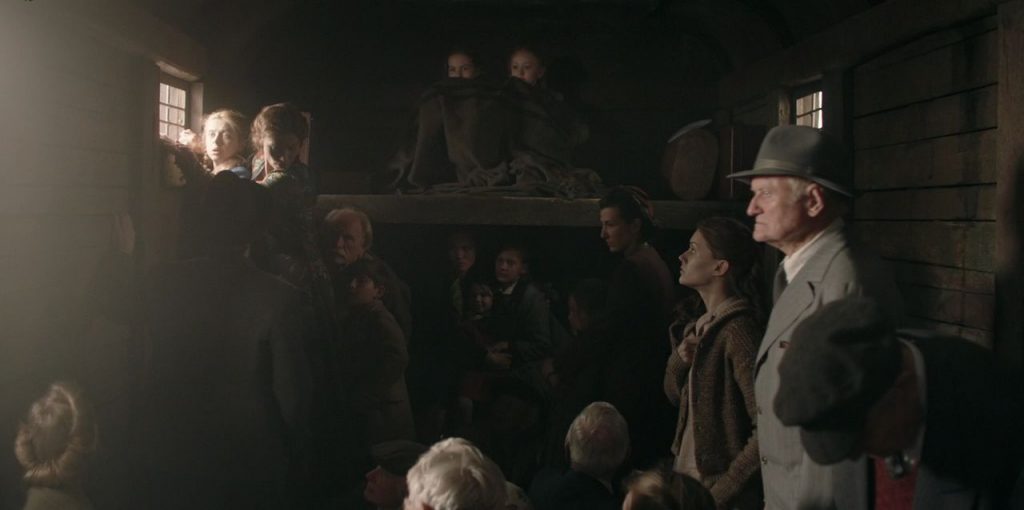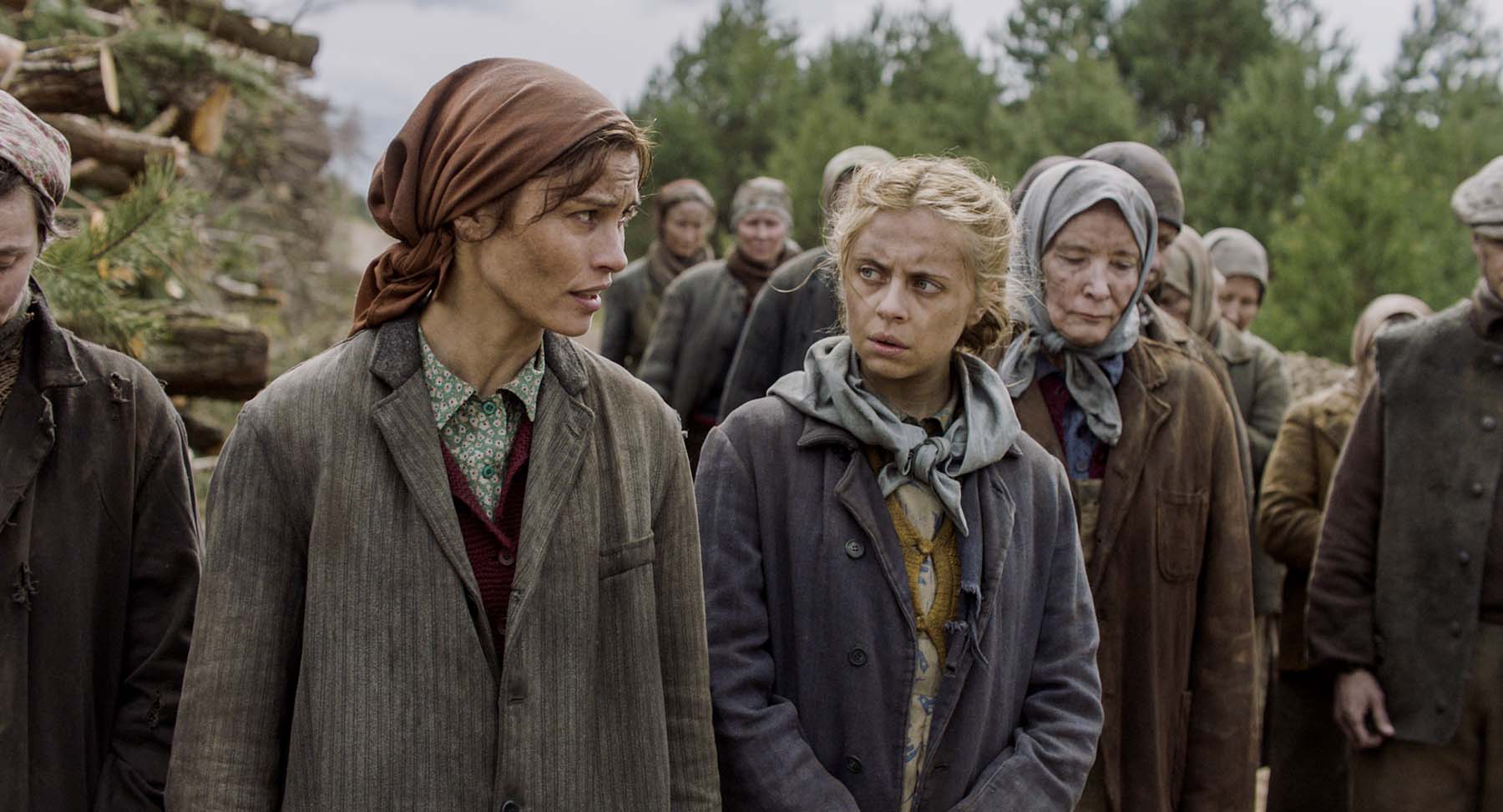THiNC. is a website that is all about Indie Films that make one think. Maybe we are unpacking a confusing Tarantino-esque movie one day. Or maybe it’s time travel madness with 27 story lines all collapsing in on itself. Or, no, I got it, what if it’s Shane Carruthian craziness? Of course these movies are going to make you think so much they’ll make your head hurt. And that burn? That Movie-Brain-Freeze (I should totally buy that domain name right now) is going to make you hurt a bit, but it’s also going to make you think.
I would submit to you though, that here is a whole ‘nother sub-genre of movies that are virtually untouched on this site, and shouldn’t be. What is this untapped potential? This mother load of potential THiNC. goodness? History. Historically accurate mindjob movies. What? How is that even possible? Well, think about it. A great screenplay writer could never have anticipated the holocaust. Not even a hundred monkeys pounding on typewriters for millions of years would have even hinted at that plot line. So why wouldn’t we find a ton to think about from just the plot lines provided by history? Heck, they are amazingly original (hahahaha – no, the irony here isn’t lost on me) stories, with so much we could learn. So many lessons about human nature and about ourselves. So enough dithering and pontifications about how you really should like historically based movies. I should just have faith in you guys once. Na.
The Story of Ashes in the Snow
At first, Ashes in the Snow, had a terrible Hallmark production quality to it. The schmaltzy warm light, the saccharine idyllicness, all seemed to indicate a really tepid quality movie. But once the movie took the turn we all expect of World War II-esque films, I realized this was a horrible history lesson I knew nothing about, and had to figure out. So as soon as the horridness of the truth started making itself clear, and just how senseless it was, I paused the movie and started voraciously reading about the history of this tragic situation. It was just too baffling to fit all the pieces I did know in among all these other crazy pieces that piled indiscriminately on top of everything else.
Regardless, the story of Ashes in the Snow is the fictional story Lina (played by Bel Powley). Her story is assembled from numerous real accounts of real biographical events of the day. Lina, a naturally talented artist, determined to go on and get an art degree from one of the most prestigious colleges in Lithuania. And on the day she receives her possible acceptance letter to university, her family is torn apart. Her father is marched off, and soon after, Lina, her mother, and her brother are all trained out to Siberia.

The History of Ashes in the Snow
And today, I bring to you a little slice of history I literally knew less than nothing about. I am sure we have all studied World War II extensively in school. I mean, I’m sure we are all well versed in the history of the Third Reich in Europe, on the Eastern Front, as well as the front in Asia. (Can’t say enough about a book called, The War of the Rats, which covers the battle for Stalingrad – the single bloodiest battle in the history of man. Something like 2 million dead. “The death of one man is a tragedy, the death of millions is a statistic.” Stalin. Which brings us to the topic of today’s discussion. Oh wait, we’re still stuck in paren land.) Better.
So, like I said, Stalin brings us to the topic of today’s movie. Now, to the history I really knew nothing about. In 1941, and 1945 through 1952, something like 130,000 people were forcibly deported from Lithuania, and sent to Serbia. 70% of which were women and children. This number doesn’t even include the 150k dissidents/political prisoners heading to Siberia forced labor camps. These were families who were picked up out of the Baltics (primarily Lithuania) and sent into the horrifically icy living conditions of Siberia. About a fifth of which died from the awful living conditions they found themselves in. But it was the forced labor, the potato farming, the wood gathering, that worked them to the bone while they were there, freezing to death. Then, a couple years after Stalin died, many of the deported were released to start heading their way back to their homes in Lithuania. But even years later, in the 90’s, almost 30,000 deported individuals were still being rejected for return to Lithuania requests.
Which All Begs The Question
Remember back up at the top when I said that I had no real idea about this history? I mean, I knew about people being “Sent to Siberia”. But I didn’t know what that meant. I didn’t know the practicalness of it. The fact that innocent families, children, and mothers were shipped into terrible conditions to work on behalf of the party.
The Soviets swept through Lithuania in 1940. The Nazis did the same in 1941, only to be pushed back once again by the Soviets in 1944. In the turmoil of shifting front lines, Lithuania’s interim rulers gambled, collaborating with the Nazis in the hope of post-war independence.
They failed, and 80 percent of Lithuanian Jews, the Litvaks, were murdered during the first six months of Nazi occupation. And after the war, the Soviets stayed.
Now, let’s stop for a second and think about this timeline a second. The Soviets swept over Lithuania in 1940 and mauled it like an angry dog. Then the Nazis’ maniacal zombies counter-swept the country in 1941. And in 1944 the homicidal Soviets came back to give the Lithuanians another warm hug. And in the chaos of pogroms and insanity, the rulers of Lithuania decided to put their weight behind the Germans. Why? Well, because they thought maybe they’d be granted independence at the end of the war, if the Germans won. (We know how that bet turned out.) And just like that, 80% of all Lithuanian Jews, the Litvaks, were murdered in the first six months of the German occupation. And to make matters even worse (is this even comprehensibly possible?!?) after the war concluded, the Soviets stayed.
The end result of this depressing real world chess game was that humans, with real hearts beating people, forcefully deporting humans in box cars from 1939 through until 1952. Which all begs the question for me…why did we give Stalin a pass, and we didn’t give Hitler one? Yes, I know that we (The Americans) were slow to dive into the conflict, and to assist those people in those box cars. But, apparently we were OK with the the Russians doing it, as long as it was on a smaller scale? But it was a decidedly similar ideological bent. The apparatchiks working within this socialist regime were determined to push these ideas. And these ideas came with the deaths of many innocents, in support of this idea. And these deportations served two different distinct purposes. The first was in putting down the resistance to Sovietization policies. And the second was in providing free labor in sparsely populated areas of Russia. It was brutalism for the sake of teaching a lesson, and it was a lesson that enriched the state along the way.
Ashes in the Snow
The movie Ashes in the Snow taught led me to water and then I ran off and drank from there, and then a million other wells besides. I literally think I ended up reading three books on the topic just as I tried to figure out what the movie was all about. The movie itself wasn’t absolutely brilliant. But it was compelling all the same. And it opened the door to a world of of history that just blew my mind. Latvians were worked over by Germans, then Russians, then Germans, and Russians, in such a rapid succession that it is impossible to imagine. And it was the insights and mini-epiphanies that made me bring this movie to you. If you already knew about the Baltic’s, and the atrocities committed there, maybe the movie was worth a pass. But for most of us, I’m sure it was enlightening. I don’t know. What did you think of it?
Edited by, CY



